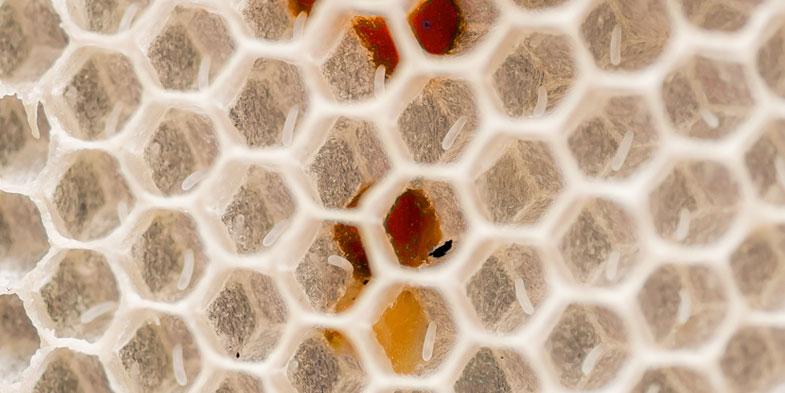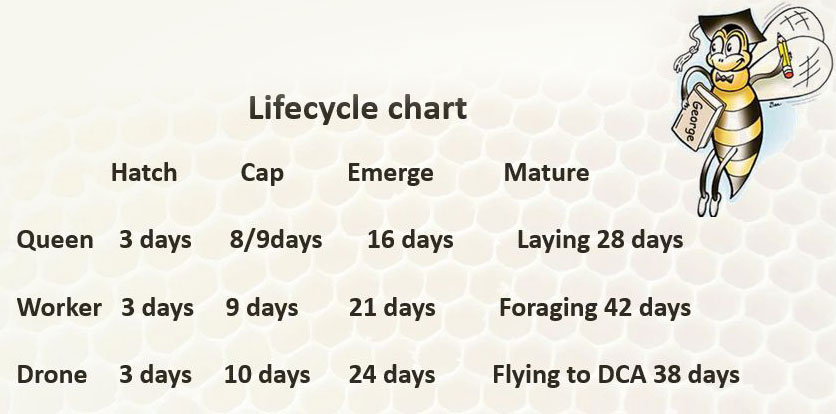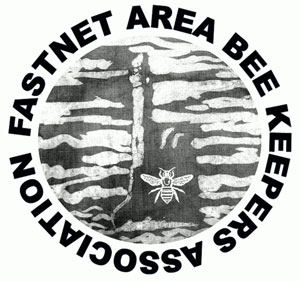After what has been a particularly cold and wet May, we look forward to June!
Weather permitting, the blackberry and the clover will emerge and this is a great source of nutrition for our bees. As the flow starts you certainly need to inspect your hives weekly. As a beginner, you might be tempted to have a ‘peep’ more often but please don’t. Too much interference from the beekeeper stresses the colony and we certainly don’t want that.
When the brood chamber is full of brood (emerging baby bees) and stores (nectar, honey and pollen in some of the cells) the bee population is rising. We want a big population of foragers to increase our honey yield.
So, how do we cope with this increased volume of bees?
Place a queen excluder over the brood box and then place a super on top of that. Then put the crown board and roof back in place. The bees now have space to store all their harvest and the brood chamber will be less packed. The queen excluder prevents the queen going up to the super(s) and therefore she is unable to lay eggs in the shallow frames that the bees fill with stores and what will eventually be honey.
When do I add another super?
I generally add another super when the frames in the existing super are covered with bees. Overcrowding could spark the swarming urge. It’s important to have at least 2 supers per hive available for the honey flow.
Inspecting
Remove roof, crown board, super(s) and queen excluder and place these beside the hive. You now have access to the brood chamber. Remove an outer frame and check for brood, stores and empty cells, and then leave this to one side, carefully ensuring that the queen is not on this frame. This gives you much more manoeuvrability to inspect the subsequent frames, one by one. Many a queen has been killed by the beekeeper, but when you’re vigilant and careful this should not occur.
So, what are you looking for?
Is there evidence of varying stages of brood from larvae to sealed cells? The younger larvae appear as white C-shaped grubs lying at the base of the cells, right up to much larger larvae that are now beginning to look like a bee. When the cell is sealed, you now know that the emerging worker bee is at least 8-9 days into its development. For sealed drone brood (which is visibility larger than the worker brood and ‘domed’ in appearance), you know they are 7 days into their development.
Can you see eggs?
Sometimes beginners find it difficult to see eggs, but I guarantee that with practice you will be able to recognise them. It’s an important skill because the sight of eggs means that the queen is more than likely in the hive, and, if she is not, she has only been gone in the last 3 days (this is because it takes eggs 3 days to turn into larvae). You’ll find eggs near brood, and it is much easier to see on newer, lighter coloured frames. Gently manipulate the frame and make use of the sunlight. You’re looking for small, white, threadlike eggs which will be at the bottom of the cell. Look for white 2 mm lengths of white thread.

Have the bees stores?
Can you see nectar, pollen and honey? The nectar is liquid and stored in the cell. The honey is ripened nectar and the cells where this is stored are capped with wax. The pollen is of varying colours depending on where the girls have been collecting and is stored in cells also often quite near the brood nest.
Are there enough empty cells so that the queen had space to lay eggs?
If there is not enough space for her to lay, word gets around quickly in the hive and there will be a decision made to swarm.
Are there queen cells present?
‘Splitting the colony’ can be found in Chapter 7 in Ted Hooper’s book. Please read this chapter.
Queen cells often resemble a peanut and normally protrude from the brood frame. Despite all your efforts to be on top of the game, the bees’ natural tendency is to swarm. If you find queen cells, you can take advantage of the situation and create a new colony.
June is the month to keep ahead of the bees by checking weekly!
Pollinator Plants

Ceanothus / California Lilac
Next time you’re at the garden center, treat yourself to this fantastic shrub: Ceanothus or Californian Lilac. Mine is about 10 years old and has had only a very light prune a couple of times. It’s now about 2m high and 3m wide. Every June it bursts into bloom with the most stunning blue flowers which are quickly descended upon by neighbouring Apis Mellifera Mellifera (lucky them). Apart from enjoying this beautiful plant yourself, the benefit to your bees is great as June dearth is a lean time for the foragers in general. Likes full sun but will need protection from that mean southeast wind especially if your garden is elevated. Go and get one NOW!
– Mary Downey
Bee Maths
Those of you who attended last week’s lecture with Keith Pierce will have seen the ‘Bee Maths’ chart. Keith was kind enough to send this on to us, and we’ve included it below. These lifecycle timelines are important to memorise for efficient swarm control and honey production.

| Hatch | Cap | Emerge | Mature | |
| Queen | 3 Days | 8-9 Days | 16 Days | Laying 28 Days |
| Worker | 3 Days | 9 Days | 21 Days | Foraging 42 Days |
| Drone | 3 Days | 10 Days | 24 Days | Flying to DCA* 38 Days |
* DCA – Drone Congregation Area – A specific place where drones wait for virgin queens to visit
Our Next Lecture
Our next lecture will be presented by Dr. Ashley Allshire. Don’t forget to join us on June 22nd at 7pm!
Until then, we at FABKA wish all the exam participants the very best of luck and we look forward to meeting you all again next month! We are slowly getting some of the outdoor demonstrations completed and we are certainly not forgetting any student who wants to avail of same.

